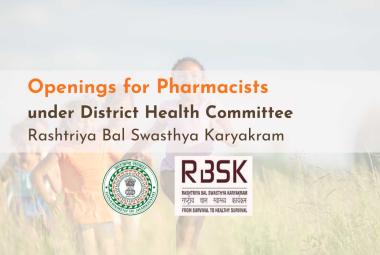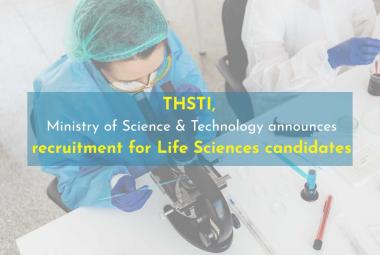{ DOWNLOAD AS PDF }
 ABOUT AUTHORS:
ABOUT AUTHORS:
Anuradha Sharma1*, Vaibhav Walia2, Monika Gahlawat3
1Division of Pharma. Chemistry, 2Division of Pharmacology, 3Division of Pharmaceutics,
G.V.M. College of Pharmacy,
Sonepat, Haryana, India
*anusarswat@gmail.com
ABSTRACT
Plagiarism is a multifaceted and ethically a complex problemwhich simply means the stealing and publication of another author’s work as one's own original work without acknowledge the original author. Plagiarism is simply an act of fraud.Authors should acknowledge sources fully and appropriately to follow the ethics and plagiarism is failure to do so. However the students or the authors sometimes fail to acknowledge the source appropriately and properly. These failures are largely due to the lack of knowledge to use the citations properly. Therefore to maintain the ethics the plagiarism should be avoided. The aim of this paper is to define plagiarism, its type, methods of detection and the ways to avoid plagiarism.
[adsense:336x280:8701650588]
REFERENCE ID: PHARMATUTOR-ART-2312
|
PharmaTutor (ISSN: 2347 - 7881) Volume 3, Issue 2 How to cite this article: A Sharma, V Walia, M Gahlawat; Review: Plagiarism an Act of Unethics; PharmaTutor; 2015; 3(2); 19-24 |
INTRODUCTION [1]
Plagiarism is defined as the unacknowledged use, as one’s own, of work of another person, whether or not such work has been published. In other words, we are talking about copying. It is clear that it doesn’t matter whether the work which is copied has already been published or not. The significant points are that it was copied from someone else and that no acknowledgement has been made. Plagiarism is considered a problem because it not only infringes upon existing ownership, but also deceives the reader and misrepresents the originality of the current author: “it is the mixture of law or rule-breaking and social misrepresentation and deception that give plagiarism its bitter taste”. If a plagiarism relationship exists between two texts, it suggests that the texts exhibit some degree of intertextuality, which would not appear between them if independently written.
Reasons for Plagiarism:
1. Some students plagiarise unintentionally, when they are not familiar with proper ways of quoting, paraphrasing, citing and referencing.
2. Students plagiarise to get a better grade and to save time.
3. Students’ overtaxed lives leave them so vulnerable to the temptations of cheating’.
4. Some student see no reason why they should not plagiarise or do it because of social pressure, because it makes them feel good or because they regard short cuts as clever and acceptable
5. To some students plagiarism is a tangible way of showing dissent and expressing a lack of respect for authority.
6. Some students deny to themselves that they are cheating or find ways of legitimising it by passing the blame on to others"
7. It is both easier and more tempting for students to plagiarise as information becomes more accessible on the Internet and web search tools make it easier and quicker to find and copy
[adsense:468x15:2204050025]
Forms of plagiarism: [2]
Plagiarism can take several distinct forms, including the following:
(1) Word-for-word plagiarism: Direct copying of phrases or passages from a published text without quotation or acknowledgement.
(2) Paraphrasing plagiarism: When words or syntax are changed (rewritten), but the source text can still be recognized.
(3) Plagiarism of secondary sources: When original sources are referenced or quoted, but obtained from a secondary source text without looking up the original.
(4) Plagiarism of the form of a source: The structure of an argument in a source is copied.
(5) Plagiarism of ideas: The reuse of an original thought from a source text without dependence on the words or form of the source.
(6) Plagiarism of authorship: The direct case of putting your own name to someone else’s work.
Other forms, such as paraphrasing and the reuse of structure can also be identified relatively easily, but get progressively harder as the plagiarist uses more complex rewrites or to hide the original text, or reuses only ideas and not the content. The extreme is ghost-writing: getting someone else to write the text for you. These forms of plagiarism are not just harder to detect, but also harder to prove.
Eight acts of plagiarism: [3]
(a) Copying text and inserting it in a paper without citation,
(b) Copying an entire paper without citation,
(c) Asking someone to provide them with a paper,
(d) Using the Internet to copy text and insert it in a paper without citation,
(e) Using the Internet to copy an entire paper without citation,
(f) Using the Internet to ask someone to provide them with a paper,
(g) Purchasing a paper from a term paper mill advertised in a print publication,
(h) Purchasing a paper from an online term paper mill. (p.378)
Plagiarism detection: [2]
Manual Plagiarism Detection:
Manual Plagiarism Detectionwithin a single text is based on identifying inconsistencies such as the author’s writing style, or recognizing passages with a familiar feel to them. Between multiple texts, plagiarism detection involves finding similarities which are more than just coincidence and more likely to be the result of copying or collaboration between multiple authors. In some cases, a single text is first read and certain characteristics found which suggest plagiarism. In academia, plagiarism detection is generally down to the knowledge, ability, time and effort of the lecturer/teacher assessing the student’s work. Following point illustrate that plagiarism take place:
1. Use of advanced or technical vocabulary beyond that expected of the writer.
2. A large improvement in writing style compared to previous submitted work
3. Inconsistencies within the written text itself.
4. Incoherent text where the flow is not consistent or smooth, which may signal that a passage has been cut-and-pasted from an existing electronic source.
5. A large degree of similarity between the content of two or more submitted texts.
6. Shared spelling mistakes or errors between texts.
7. Dangling references, e.g. a reference appears in the text, but not in the bibliography.
8. Use of inconsistent referencing in the bibliography suggesting cut-and-paste.
Automatic Plagiarism Detection:
The goal of an automatic plagiarism detection system is to assist manual detection by: reducing the amount of time spent comparing texts, making comparison between large numbers of multiple texts feasible and finding possible source texts from electronic resources available to the system. The systems must minimise the number of false positives (those incorrectly classed as plagiarised) and false negatives (those incorrectly classed as nonplagiarised), and maximize the number of true positives (those correctly classed as plagiarised) and true negatives (those correctly classed as non-plagiarised). The greater the similarity (or fewer the differences) between texts; the more likely is that one of the texts is derived. One of many challenges in automatic plagiarism detection is the selection of suitable discriminators that reflect plagiarism and not co-incidental similarity due to content or theme. Three areas to address in automatic plagiarism detection include the following:
1. Finding suitable discriminators of plagiarism which can be quantified.
2. Developing suitable methods to compare those discriminators.
3. Finding suitable measures of similarity.
Softwares to detect the plagiarism: [4]
iParadigms has developed a search engine, iThenticate, that is able to clearly identify matching texts between two text based documents of any language or size. The search engine examines a chunk of text, eliminates words that are too common, and turns the other words into numbers. It also converts Internet content into numbers. Consequently, it can compare patterns of numbers from the sample with patterns of numbers from the Internet. To do this, the search engine uses a number of complex mathematical algorithms. iParadigms’ search engine is used at Web sites that monitor plagiarism (e.g., Turnitin.com) and at a Web site focused on media such as movies and music (Slysearch.com).
At Turnitin.com, students or instructors submit papers that will be tested against the Internet or proprietary databases for plagiarism violations. The company believes that the recirculation of term papers is a key source of plagiarism; therefore, its database contains student papers, papers posted online, material from academic Web sites, and documents indexed by major search engines. Its database consists of 800 million Internet pages and more than 100,000 papers. Student papers submitted by registered users are also archived to the database. Thus, extended use of the service will build an instructor’s archive of papers and will ensure that students cannot easily recycle papers from previous classes. If an instructor is interested in “testing” a paper for plagiarism, he or she submits it for processing through the proprietary search engine. Once the process is complete, an originality report indicates the probability (in terms of a percentage) of whether the paper was plagiarized. Instructors can click on links to direct them to the source of the possibly plagiarized material. This process takes twenty-four hours on average but can take up to two days, depending on the length of the text and the level of demand. Turnitin.com was designed to provide users with a simple process for submitting papers for a plagiarism test. A user completes a short form to submit the paper. The user identifies institution, department, course, name, and ID number. Then the user may submit the paper for testing by pasting a text-only document onto the Web page.
EVE2 (Essay Verification Engine), anti-plagiarism software that instructors may license for a one time fee and download to their hard drives. A user may submit a paper in .txt form, and the software will search the Internet, including term paper mills, for results. Although the software is targeted at all educational levels, most users seem to be high school teachers. As noted, an instructor must convert papers to .txt format and submit the text to the software. EVE2 then examines the papers and makes a large number of searches of the Internet to locate “suspect” sites. Once suspect sites have been located, EVE2 visits all of these sites to determine if they contain work that matches the paper in question. Searches require fifteen minutes to two hours for processing. This time is in part linked to the power of the user’s hard drive. Once the search is complete, the instructor is given a full report on each paper that contained suspected plagiarism, including the percentage of the paper plagiarized, an annotated copy of the paper showing all plagiarism highlighted in red, and links to the plagiarized sites. The report does not distinguish which sentences have been plagiarized from which sites.
Knowledge Ventures is developing a suite of tools and middleware components for use in text to- text matching applications. CiteMaster, the first application to incorporate these tools, will use supercomputer processing power to compare submitted text documents against the content of a proprietary academic database of textbooks, journals, Web content, and student-submitted papers. Through the use of customized algorithms and a parallel-processing platform, CiteMaster should be able to detect both verbatim and inexact text matches and to return results in real time. For each student-submitted paper, a dynamically generated “report” will be returned to a Web browser, including an HTML reconstruction of the original query document and relevant statistical information about the matches found. Matching or “suspect” sentences will be clearly identified in the text, with their proper citations listed accordingly. CiteMaster is in the early stages of development, however, and is not yet commercially available. (p. 43, 44)
Penalties for Plagiarism: [5]
1. Requirement to submit a new piece of work, or partial or total loss of marks for an assignment or course.
2. An official warning that the next offence will be punished by suspension or expulsion from the university.
3. Rescinding of university-funded scholarships or bursaries.
4. Suspension from the University for one or two years.
5. A recommendation for expulsion from the university.
6. A recommendation to revoke or rescind a degree.
Techniques for Avoiding Plagiarism: [1]
There are two things you can do to avoid being accused of plagiarism, they are paraphrasing and following the rules.
Paraphrasing:
Books and articles should be used as a source of information from which you write, in your own words, what you believe are the important points. You must acknowledge your sources of information (see below). In the parts of your writing that rely on source texts for information, paraphrasing should be used the most. As well as stating the important points you should also explain the points, compare and contrast the views of different authors you have read, and add your own comments on the topic under discussion. By doing these things you go beyond merely repeating the information which you have found. This is what makes a good assignment. Repeating information shows only that the information has been read and possibly memorised. The addition of explanations, comparisons, contrasts and comments is better because it shows that the information has been read, analysed and understood. A teacher who is marking an assignment is sure to give higher marks for such a display of knowledge and understanding.
Follow the rules when copying directly from a text:
There are times when you can quote directly from your source material. However, you must follow certain rules.
1. Direct copying of part of a passage (e.g. a whole paragraph) must occur rarely in your writing and once copied should not represent a large proportion of your own text. It should be clearly distinguished from the rest of your text in a way which makes it clear that it is a quotation.
2. Very short parts of a source text (e.g. part of a sentence) can be copied when needed. However, the words that you have copied must be immediately obvious to your reader. You must also take care not to change any of the words.
3. The exact source of your quotation must be acknowledged. This must be done in a way which shows clearly how much is copied.
How to prevent Plagiarism while working on assignments: [6]
1. Always put quotes in quotation marks and indent quotes of significant length so they stand out from the rest of the text. This marks them as not your own words.
2. Always acknowledge the source within the text and in full within the bibliography at the end.
3. Where paraphrasing an individual always acknowledge them as the source of the ideas.
4. Do not leave your work until the last minute, in order to avoid panic plagiarism.
5. Always ask your tutor for clarification if you are unsure of an assignment.
6. See your student handbook for guidance regarding the favoured reference and citation conventions for your subject area.
Best Practices: [7]
- The students should be reminded about the goal of research.
- Clear policies should be demonstrated regarding the consequences of both plagiarism and the misuse or inaccurate citation of sources.
- The topics of assignment should be based on principles of inquiry and on the genuine
- Students should be given proper timeto explore their topics slowly and to broaden their ideas.
- Once the topic has been decided the supervisors or the guide should ask the students to frequently on their choice of topic.
- Conferences with students are invaluable for enabling them to refine their focus and begin their inquiry.
- Incorporating a variety of sources can help students develop ways of gathering, assessing, reading, and using different kinds of information and can make for a livelier, more unique paper.
- Design activities that help students to become familiar with these conventions and make informed choices about when and where to employ them.
- Discuss with students how their sources will enable them to support their argument or document their research.
- Develop reading-related heuristics and activities that will help students to read carefully and to think about how or whether to use that reading in their research projects.
- If students have misused sources, they probably do not understand how to use them correctly. If this is the case, work with students so that they understand how to incorporate and cite sources correctly. Ask them to rewrite the sections where sources have been misused.
- Discuss with them the consequences of plagiarism described in your syllabus.
CONCLUSION
Plagiarism is also considered a moral offense against anyoneand has always becomes a matter of concern for the authors who want to represent their own efforts and to reflect the outcomes of their learning. Due to the advent of internet and easy access to the unlimited free articles on every conceivable topic the chances of plagiarism has been increased. The plagiarism can happen intentionally or unintentionally, however the case may be, but it is total unethical and is considered a moral offense against the plagiarist's audience. To avoid plagiarism, it should be detected. Teachers and supervisors can play key role in the detection of plagiarism. Many software are also available to detect the plagiarism and if detected should be punished by sanctions ranging from suspension to termination, along with the loss of credibility and perceived integrity.
REFERENCES
1. Gardner D. Plagiarism and How to Avoid It. 1999.
2. Clough P. Old and new challenges in automatic plagiarism detection. Plagiarism Advisory Service 2003; 1-14.
3. Scanlon PM, Neumann DR. Internet Plagiarism Among College Students Journal of College Student Development 2002; 43(3): 374-385
4. Groark M, Oblinger D, Choa M. Term Paper Mills, Anti- Plagiarism Tools and Academic Integrity. EDUCAUSE 2001; 40-48.
5. learningcommons.uoguelph.ca
6. library.dmu.ac.uk
7. wpacouncil.org/positions/WPAplagiarism.pdf
NOW YOU CAN ALSO PUBLISH YOUR ARTICLE ONLINE.
SUBMIT YOUR ARTICLE/PROJECT AT editor-in-chief@pharmatutor.org
Subscribe to Pharmatutor Alerts by Email
FIND OUT MORE ARTICLES AT OUR DATABASE









